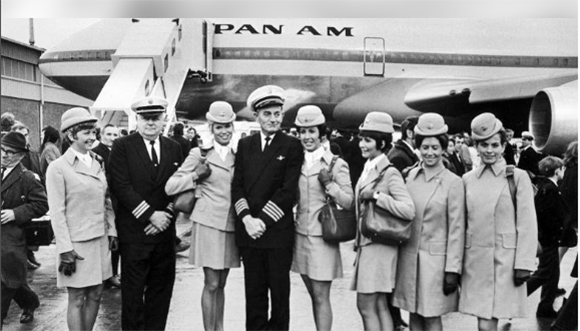The last 747 under construction at Boeing's plant in Everett, United States, on December 6, 2022. Photo: Boeing.
The Everett aircraft production plant near the city of Seattle in the US state of Washington will deliver the last Boeing 747-8 to Atlas Air in the freighter version on Tuesday, 53 years after the
original
jumbo jet
, and possibly the most aesthetic, will revolutionize the air travel industry.
After a decades-long reign, the most famous jumbo jet, iconic with its four engines and front hump, gives way to the most efficient twin-engines of recent years.
According to industry data, the Boeing 747, one of the most recognizable aircraft to the public worldwide, was the largest in the industry for more than three decades since its first commercial flight in 1970 with the Pan Am company.
It was the first wide-body, its production has exceeded 1,570 units, which have completed 23 million flight cycles and transported more than 3,500 million passengers globally.
"On the ground it's majestic, it's imposing," said Bruce Dickinson, the lead singer of Iron Maiden who piloted a purpose-built 747 nicknamed
Ed Force One
during the British heavy metal band's 2016 tour. air is surprisingly agile.”
Designed in the late 1960s to meet the demand for mass travel, the first double-deck, wide-body, twin-aisle airliner ushered in the most luxurious club on international flights, but also opened up air travel to more passengers.
“This was the plane that introduced flight to the middle class in the United States,” said Air France-KLM CEO Ben Smith.
"Before the 747, the average family couldn't affordably fly from the United States to Europe," Smith told Reuters.
The jumbo jet (nickname or name it received for its size and capacity) also left its mark on global affairs, on presidential planes or on papal visits in the 747 nicknamed Shepherd One.
As a Pan Am flight attendant, Linda Freier served passengers ranging from Michael Jackson to Mother Teresa.
“It was an incredible diversity of passengers.
People who were well dressed and people who had very little and spent everything they had on that ticket," Freier said.
When the first 747 took off from New York on January 22, 1970, after a delay due to engine failure, he more than doubled the airliner's capacity to 350-400 seats, while reshaping the design of the airports.
On January 22, 1970, the Boeing 747 made its first commercial flight between New York and London as part of the Pan American airline.
Photo: Boeing.
“It was the plane for the people, the one that really delivered the ability to be a mass market,” said aviation historian Max Kingsley-Jones.
“It was transformative in all aspects of the industry,” added the senior consultant at Ascend by Cirium.
Pan Am founder Juan Terry Trippe tried to cut costs by increasing the number of seats.
On a fishing trip, he challenged Boeing president William Allen to make a plane that would dwarf the 707.
Allen put legendary engineer Joe Sutter in charge.
Sutter's team, known as "The Incredibles," took just 28 months to develop the 747 before it first flew on February 9, 1969.
Although it eventually became a cash cow, the early years of the 747 were plagued with problems and development costs (approximately $1 billion) nearly bankrupted Boeing, which believed the future of air travel lay in airplanes. supersonics.
After a slump during the oil crisis of the 1970s, the aircraft's heyday came in 1989, when Boeing introduced the 747-400, featuring new engines and lighter materials, making it a perfect choice to meet the growing demand for aircraft. demand for transpacific flights.
“The 747 is the most beautiful airplane and the easiest to land... It's like landing an easy chair,” said Dickinson, who also chairs aviation maintenance firm Caerdav.
Boeing747-8 aircraft under construction at the Boeing plant in Everett, USA.
Photo: Boeing.
The same wave of innovation that launched the 747 has spelled its end, as advances made it possible for twin-engine planes to replicate its range and capability at lower cost.
However, the 777X, which will take the 747's place at the top of the aircraft market, won't be ready until at least 2025, after delays.
"In terms of impressive technology, great capability, great economy...the 777X sadly makes the 747 look obsolete," said AeroDynamic Advisory managing director Richard Aboulafia.
However, the latest iteration of the 747-8 will grace the skies for years to come, primarily as a freighter, having outlived European Airbus' A380 double-decker airliner that dominated the skies for more than a decade.
The Boeing 747-8i, introduced in February 2011. Photo: Boeing.
The final delivery of the 747 leaves questions about the future of the gigantic but now underutilized Everett widebody production plant outside Seattle, while Boeing is also struggling in the aftermath of the covid pandemic and a 737 MAX safety crisis. .
Chief Executive Dave Calhoun said Boeing might not design a new plane for at least a decade.
"It was one of the wonders of the modern industrial age," Aboulafia said, "but this is not an age of wonders, it's an age of economy."
(With information from Reuters, Boeing and CNBC)
